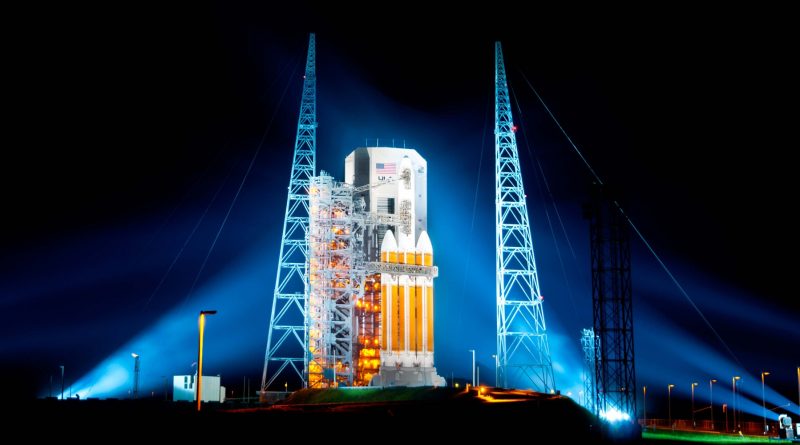Massive Eavesdropping Satellite cleared for Launch atop Delta IV Heavy Rocket
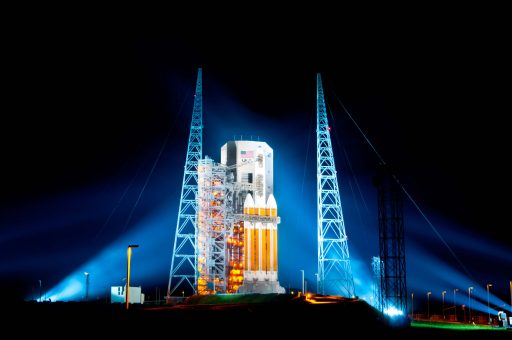
America’s largest rocket is set for liftoff on Thursday with a clandestine satellite for the U.S. National Reconnaissance Office.
The Delta IV Heavy rocket is set for liftoff from Cape Canaveral at 17:59 UTC, turning eastward to deliver its hush-hush payload directly into a Geostationary Orbit in a mission lasting several hours.
The United Launch Alliance Delta IV Heavy currently holds the rank of America’s biggest rocket, a status it will lose when SpaceX debuts its Falcon Heavy rocket later this year or early in 2017. Delta IV Heavy is called up when massive satellites need a ride into orbit or payloads are aiming for particularly high-energy deliveries. So far, the rocket conducted eight missions, the most recent being NASA’s Orion Exploration Flight Test in 2014 that took the Orion capsule twice around the planet for a shakedown mission ahead of crewed flights.
Hidden under Delta IV’s payload fairing is the NROL-37 satellite, operated by the National Reconnaissance Office – a secretive government agency responsible for the design and operation of America’s reconnaissance satellites, covering optical and radar reconnaissance, electronic intelligence, naval reconnaissance and secure communications.

The identity of the NRO’s satellites is kept secret, though the nature of the payloads is usually well known prior to launch based on the type of launch vehicle and launch site as well as navigational warnings that indicate where the satellites are headed. After launch, a worldwide network of satellite trackers typically finds and monitors the satellites and their activities, providing more information on their tasks.
NROL-37 can be identified with a high-degree of certainty as the seventh Advanced Orion satellite – a large signals intelligence bird deploying a huge mesh antenna approaching 100 meters in diameter to intercept missile telemetry from foreign territories as well as other electronic communications.
The satellites, also known as Mentor, are part of a program dating back to 1970 when the first ‘Aquacade’ signals intelligence satellite headed into Geostationary Orbit. Back then, the satellites weighed in at only 700 Kilograms and featured antennas no more than 20 meters in diameter. Space Shuttle Discovery lofted a pair of Orion satellites in 1985 and 1989 carrying antennas of 50 meters ahead of the inauguration of the Advanced Orion Satellites.
Three Advanced Orion satellites headed into orbit atop Titan IV rockets in 1995, 98 and 2003 followed by three Delta IV Heavy missions in 2009, 10 and 12. The 2012 mission was of particular interest since it debuted the more powerful RS-68A engines that were developed in part due to the requirements for this particular launch – indicating that the Mentor satellites had gained additional weight, likely in their next evolutionary state.
>>Identifying the classified NROL-37 Satellite
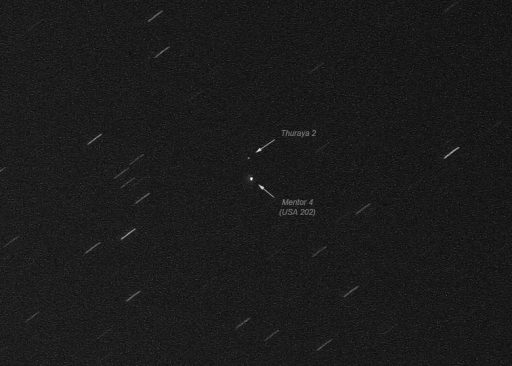
Due to the size of their antennas, the Advanced Orion satellites are the brightest satellites in Geostationary Orbit compared to communications or weather satellites residing in their orbital neighborhood.
Delta IV Heavy – capable of launching 6,750 Kilograms directly into Geosynchronous Orbit – will be tasked with a direct GEO insertion on Thursday. Typically, satellites ride into elliptical transfer orbits atop their launch vehicle before circularizing their orbit using onboard propulsion systems. NROL-37 will rely on the Delta IV rocket to lift it directly into an orbit 35,800 Kilometers in altitude, where it appears stationary in the sky and constantly views the same sector of Earth.
What position in GEO NROL-37 will eventually take is unknown – it may replace an aging satellite within the constellation or enter a new slot to expand coverage over areas that are of interest to the NSA and other intelligence agencies that process the data delivered by the satellites.
Delta IV Heavy sports three Common Booster Cores strapped together with a Cryogenic Upper Stage sitting atop the central core. The rocket stands 70.7 meters tall, spans 15 meters and has a launch mass of 733,400 Kilograms, lifted by a trio of RS-68A engines, one on each core.
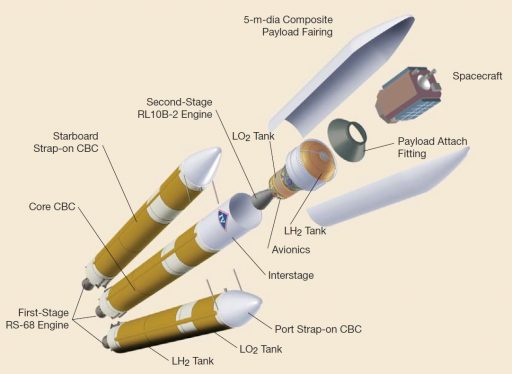
The three cryogenic RS-68A engines deliver a collective liftoff thrust of 960 metric ton force, however, the center engine throttles down around half a minute after launch to save propellants in order to continue operating beyond the burn time of the two strap-on boosters.
The two outer cores will fire for a little less than four minutes before dropping away from the vehicle followed by throttle-up on the central core that continues burning its engine for another one and a half minutes. While the center core is still firing, Delta IV will drop its large payload fairing at which point the mission enters a pre-arranged news blackout, customary for classified NRO missions.
After separating, the Delta Cryogenic Upper Stage will fire up its RL-10B engine to generate 11,200 Kilogram-force of thrust and lift the stack into a Low Earth Parking Orbit around 200 Kilometers in altitude. A short coast phase will set up for the re-start of the engine for a burn to raise the high-point of the orbit to around 35,800 Kilometers, positioned above the equator.
Next is a multi-hour coast phase to allow the stack to climb all the way up to the apogee of the orbit for the circularization maneuver. This last burn of the RL-10 engine also reduces the orbital inclination to less than 7 degrees, to drop the satellite off in a Geostationary Drift Orbit from where it can reach its operational slot.
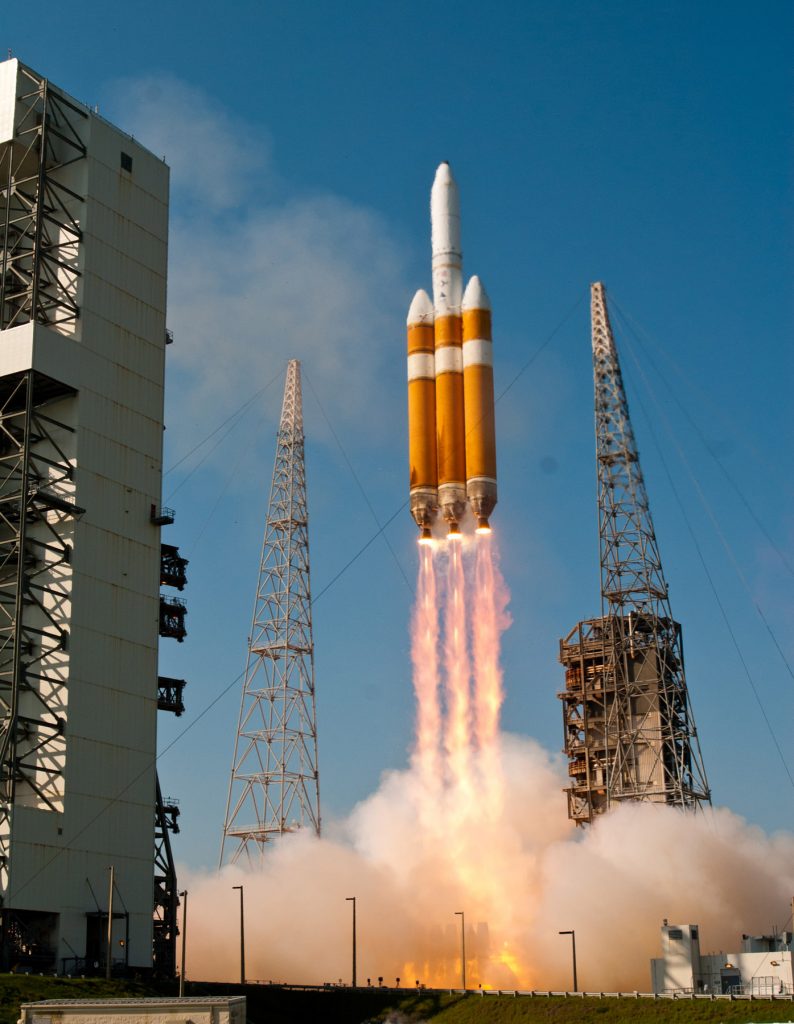
Once fully deployed, the classified Mentor satellite will be easily visible to observers on the ground, allowing its operational slot to be pin-pointed and also acting as a final confirmation of the payload’s identity.
Meteorologists are not particularly optimistic about Thursday’s launch, issuing a 60% chance of weather getting into the way due to a frontal boundary lingering in Central Florida, creating a risk of showers and storms. The placement of the boundary will determine where storms initiate, however, storm motion is expected to be eastward.
The best conditions are expected at the opening of the classified launch window as thunderstorms become more widespread later in the day. Primary concerns for Thursday’s opportunity are cumulus clouds, anvil clouds, lightning and surface electric fields.
No information on the duration of the launch window is released for NRO launches, though ULA noted earlier that the launch period ends at 22:30 UTC, but that time does not represent the end of the actual launch window.
A backup launch slot is available on Saturday because SpaceX booked the range on Friday. Weather will improve slightly, to a 60% chance of acceptable conditions as the boundary continues to linger over the area.
For Delta IV, this is the 32nd launch and the 9th in the Heavy configuration.
Because of its pricey nature, Delta IV is looking at an early retirement as United Launch Alliance expects to retire single-stick Delta IV Medium vehicles by early 2019 in favor of the company’s new Vulcan rocket, eventually replacing Delta IV and Atlas V.
To ensure continued access to space for National Security payloads, Delta IV Heavy will be kept operational into the 2020s by building up an inventory of cores prior to shutting down the assembly line. DIV Heavy currently has prospects for another six missions, though more may be added to the manifest, depending on the NRO’s needs.

